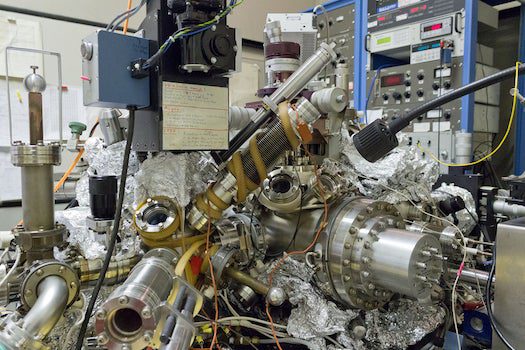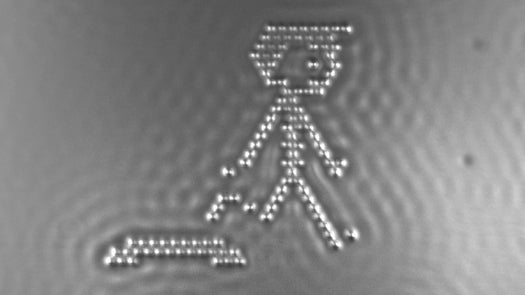Scientists at IBM Research have just earned a Guinness world record for the smallest movie ever: They created a stop-motion film by moving atoms, one at a time, across a copper surface. The result is the sweet story of a boy named Atom, who befriends a single atom and then goes dancing, plays catch and jumps on a trampoline.
To make the 242-frame film, principle investigator Andreas Heinrich and his team used a two-ton scanning tunneling microscope, cooled to -450 degrees Fahreinheit, to magnify the atoms more than 100 million times.
The scanning tunneling microscope isn’t an optical microscope. A robot arm moves a tiny needle (its tip is a single atom) across the copper surface in a scanning pattern, “like an old-fashioned TV tube,” Heinrich explains. The needle is programmed to stay a certain distance away from the surface, so when it encounters an atom, it pulls up and creates a bump in the image. To move an atom, the researchers lower the needle to push or pull it to a new position on the copper surface.

Scanning Tunneling Microscope
Each of the ball-bearing-like dots in the movie is actually made of two atoms, which form single carbon monoxide molecules. The ripples that appear around them are a result of free-floating electrons trapped in the ultra-smooth copper surface. “If you disturb the 2-D electron gas surface by moving atoms on it, you see ripples,” Heinrich says. “These electrons are free, like atoms in a gas, except they are stuck on the surface.”
It took four scientists working in shifts over 10 18-hour days to create “A Boy and His Atom.” In the end, they moved about 10,000 atoms with the scanning tunneling microscope. The character Atom is made of about 120-130 atoms.
Last year, the same group of IBM researchers used the scanning tunneling microscope to create the world’s smallest memory bit, which stores data using only 12 atoms.
See the behind-the-scenes footage from IBM:









